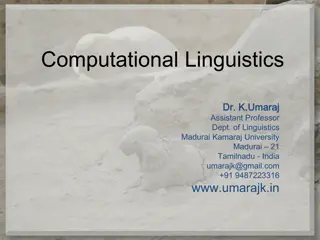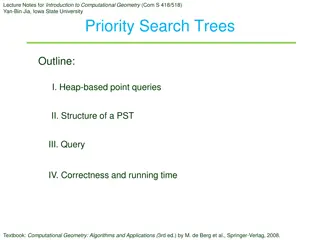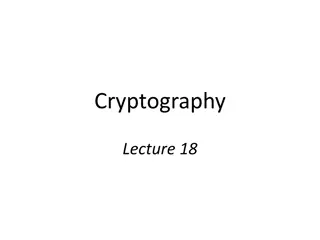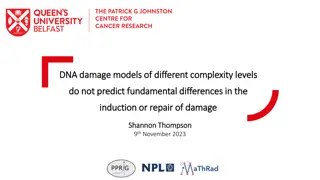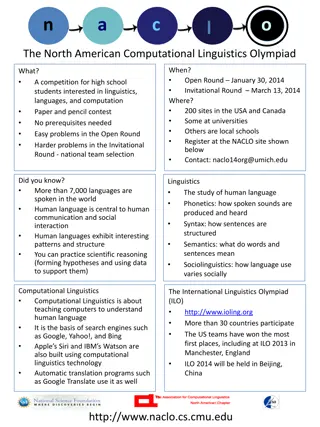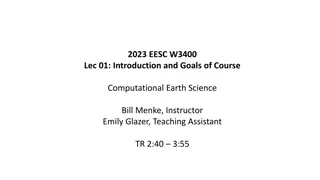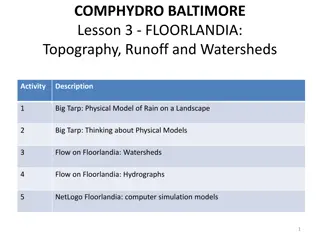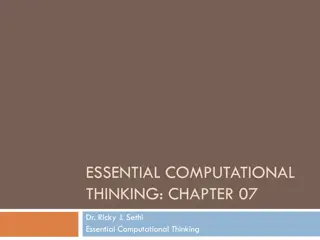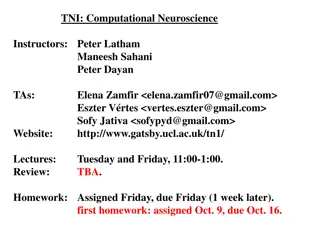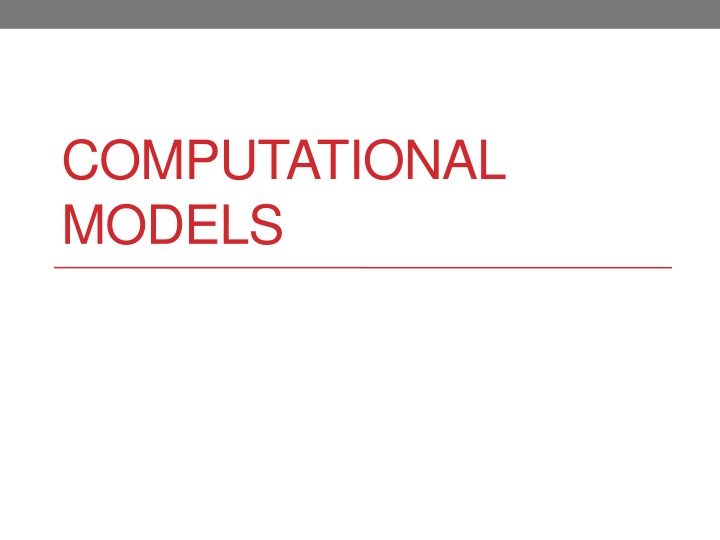
Population Dynamics: Models, Equations, and Analysis
Explore computational models, differential equations, and the Lotka-Volterra equations for understanding population growth and interaction. Learn about constrained and unconstrained growth scenarios and how to analyze equilibrium points in the Lotka-Volterra system.
Download Presentation

Please find below an Image/Link to download the presentation.
The content on the website is provided AS IS for your information and personal use only. It may not be sold, licensed, or shared on other websites without obtaining consent from the author. If you encounter any issues during the download, it is possible that the publisher has removed the file from their server.
You are allowed to download the files provided on this website for personal or commercial use, subject to the condition that they are used lawfully. All files are the property of their respective owners.
The content on the website is provided AS IS for your information and personal use only. It may not be sold, licensed, or shared on other websites without obtaining consent from the author.
E N D
Presentation Transcript
COMPUTATIONAL MODELS
Calc I in One Slide. y = 2 Consider the function: x dy We denote the derivative: dx dy In this case: = 2 x dx
Unconstrained Population Growth dp= rP dt r is the growth rate. P is the population at a given time. This is the differential equation because it includes a derivative. Solving for this differential equation means finding an equation for P given an initial population and a time.
dp= Solving rP dt = rt P P e This one can be solved: 0 Unfortunately, it is usually impossible. In those cases we approximate with a finite difference equation: population t population = ) ( + ( ) * t t growth t This looks like Python code!
Constrained Population Growth It s unrealistic to suppose that a population can grow exponentially forever. Assume the system has some carrying capacity, call it K. (This is the max # of organisms that can be supported.) Then the differential equation/rate of change of the population looks like: = rP dt dP P 1 K
Lotka-Volterra Equations: Multiple Interacting Species Track the population of two species: V (prey) P (predator) dV = k V k VP V VP dt dP = k VP k P PV P dt Here, kvis the growth rate of V, kVPis the proportionality constant for the reduction of V interacting with P, kPVis the constant for the increase of P interacting with V, and kPis the death rate of P.
Analyzing Lotka-Volterra This is getting complicated. What can we do to understand the system?
Analyzing Lotka-Volterra This is getting complicated. What can we do to understand the system? Solve for the equilibrium points! (These are points where the derivative is always zero.) We find: k V = P k PV k P = V k VP
Equilibrium Points A system may or may not have equilibrium points. Three different kinds: Unstable: system heads off to 0 or infinity if it is perturbed Stable: system returns to the equilibrium point if it is perturbed Marginally stable: system oscillates when perturbed Activity: Look at Lotka-Volterra module
Differential Equations: Theyre not just for Population Modeling! An incredibly versatile tool: Epidemic modeling Modeling of physical systems Planets Pendulums Connonballs The list is endless.
Differential Equations: Theyre not always the Right Tool Some examples . Empirical models (based on data, used to make predictions) Simulations Randomness Cellular automaton
Cellular Automaton (CA) Discrete model Consists of grid (of any finite dimension) of cells, each in one of a finite # of states. Each cell has a neighborhood consisting of a specific set of cells relative to it. New generations are created based on a set of rules determining states of cells. Rules applied to each cell simultaneously. Conway s Game of Life!
Lattice Models Similar to CA Except, cells are selected at random, and randomly interact with neighbors. Example: + (Reproduction) (Predation) (Starvation) r 2 V O V + p 2 V P P + d 2 P O O
Mean Field Approximation Differential Equation Approximation of this lattice model: dV = rVO pVP dt dP = pVP dPO dt dO = + rVO dPO dt This would hold if: The environment were infinitely large. Every individual could interact with every other individual regardless of location.
Equilibrium Points These give rise to one non-trivial steady state (equilibrium pt): d V + + = d r p r = P + + d r p These are marginally stable!
Wouldnt This Make More Sense? + + P r (Reproduction) (Predation) (Starvation) 2 V V O P V P 2 O 2 p d Probably, but it has boring stable equilibria.





